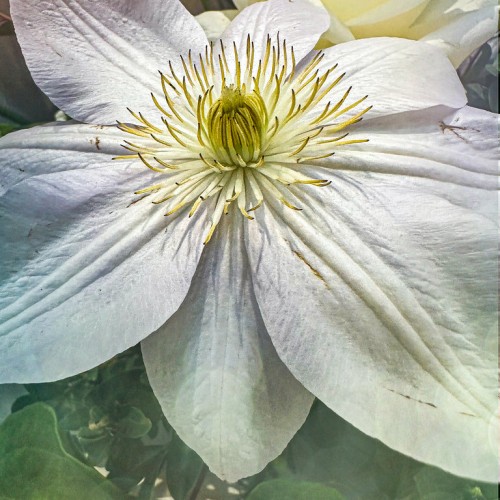
clematis
Clematis 'John Huxtable'
Cycle:
Perennial
Watering:
Average
Hardiness Zone:
4 - 9
Flowers:
Flowers
Sun:
full sun,part shade
Leaf:
Yes
Growth Rate:
High
Maintenance:
Moderate
Care Level:
Medium
watering
Clematis 'John Huxtable' is a deciduous climber that needs at least 2 inches of water per week when it is actively growing. During the hottest summer months, it may require additional water. The best way to water a clematis is to give it a deep soak at the roots, allowing the water to penetrate to at least 12 inches deep. This can be done either by using a soaker hose around the base of the plant or by slowly watering with a garden hose for 15-30 minutes. To ensure the water reaches the deep roots, water early in the day so the soil has time to dry before evening.
sunlight
Clematis 'John Huxtable' prefers full to partial sun exposure for optimal growth and flowering. Ideal growth requires at least 4 to 6 hours of direct sunlight each day. Morning sun is best so that the plant can dry off quickly and avoid moisture-related diseases, such as leaf spots and powdery mildew. Clematis 'John Huxtable' can tolerate some afternoon shade, but too much shade will reduce flowering and the plant may become leggy.
pruning
Pruning Clematis 'John Huxtable' depends on when it blooms. If it blooms in early spring, then late winter (just before its new growth appears) is the best time for pruning. If it blooms later in the season, it is best to wait until spring is over to prune it. When pruning, only remove dead and dying stems and foliage, and remember to prune lightly so that the vine still maintains its shape and form. Always make the cuts just above a fat, healthy bud. Pruning should be done with sharp, clean pruning shears, or if using a garden saw make sure to sanitize it between uses.
Season
Hardiness Map
FAQ
Can Clematis plants grow in pots?
Yes, Clematis plants can definitely be grown in pots. When planting a Clematis in a pot make sure to use a larger size pot with drainage holes and fill it with a mix of well-draining potting soil and compost. Ensure to keep the root area cool and the pot in a sunny location while providing regular water and fertilization. Check the plant almost daily to make sure it is not becoming too dry. Clematis can do well in a pot and with the right care and conditions, they will thrive.
Are Clematis plants self-pollinating?
No, clematis plants are not self-pollinating. Clematis plants need pollinators such as bees, butterflies, moths and other insects to transfer pollen from the male anthers to the female stigma of the flower in order to produce viable seed. Pollination must also occur within relatively close proximity of the same species in order to create viable hybrid plants.
Can Clematis plants be grown as a houseplant?
Yes, Clematis plants can be grown as a houseplant. It is best to grow them in a pot with full sun and a soil that is rich in organic material and retains moisture. When potting the plant, place a stake or trellis next to the pot so that the vine can climb when it begins to grow. Be sure to water your Clematis plant regularly to keep it healthy and growing. Additionally, keep an eye out for pests and treat with natural insecticides as necessary.
Could Clematis plants survive in a colder climate?
Yes, Clematis plants can survive in colder climates with proper preparation. If planted in the fall, proper mulching should be done to protect the roots from cold temperatures. If planted in the spring, they should be watered frequently to help them adjust to the cooler temperatures more quickly. If temperatures drop below -20°C ( -4°F), additional measures may need to be taken such as the application of protective wraps and thermal insulation. Additionally, plants in exposed areas should be protected from the wind to prevent excessive dehydration. With the right measures in place, Clematis plants can easily survive in colder climates.
Could Clematis plants be grown in a greenhouse?
Yes, clematis plants can be grown in a greenhouse. Due to their vine-like growth habit and tropical native origins, clematis plants thrive in the moist and warm environment of a greenhouse. Clematis are generally grown from cuttings or from dividing existing plants, and benefit from regular pruning and fertilizing. They will also enjoy the indirect light of a greenhouse and the protection from strong winds and temperatures that the humidity and contained environment provides.
